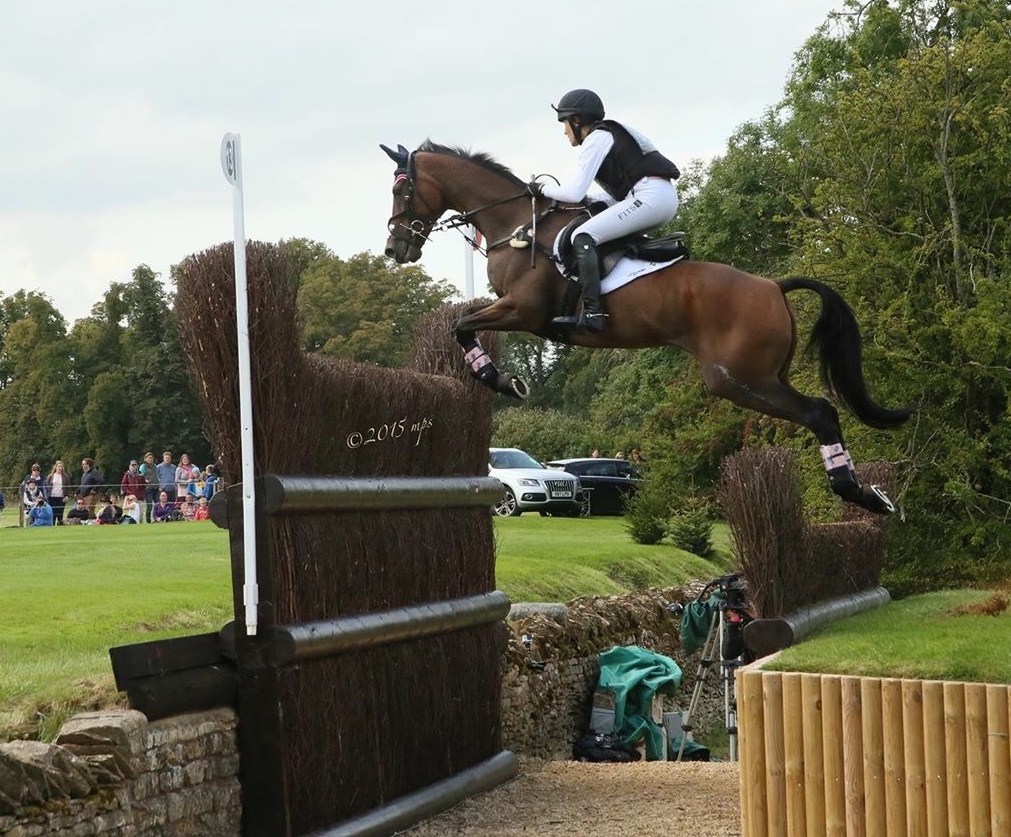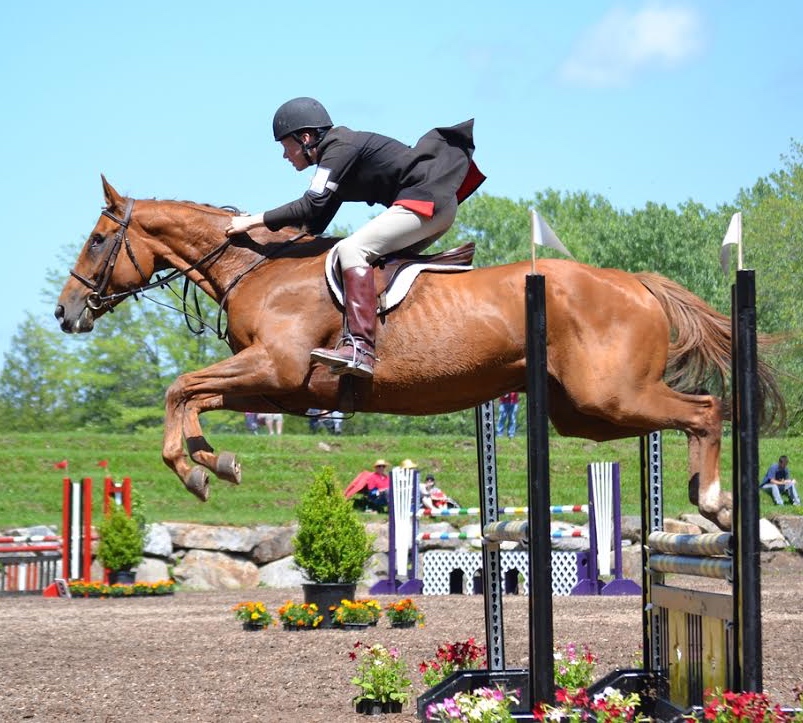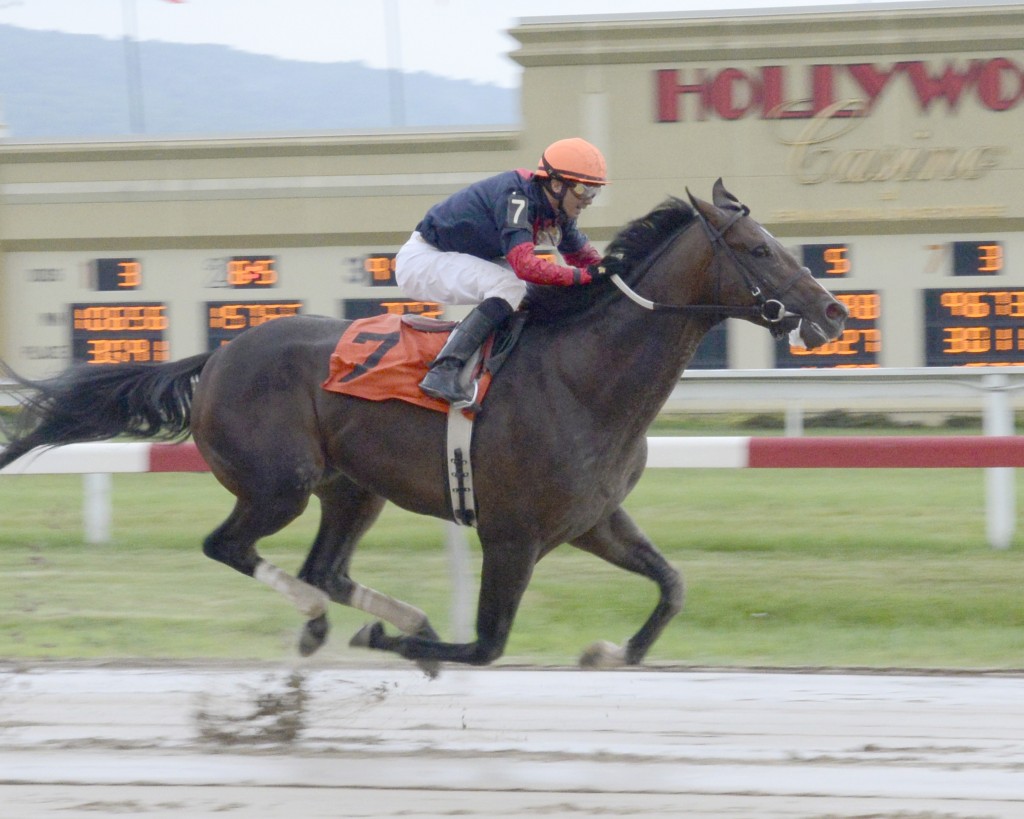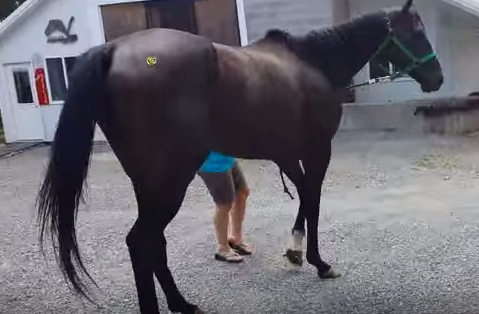
Lainey Ashker and her OTTB Anthony Patch compete at Burghley. Photo by Mary Pat Stone and courtesy Lainey Ashker
Not born of silver spoons or anything easy, but with grit to soldier-on even after nearly losing her life in a rotational fall at Rolex 2008, an American rider and her OTTB went to Burghley last month to compete on the undulating fields of the manor born, with nothing more than bootstraps and help from her friends.
Past castles reaching skyward with their weathered spires and over freshly cut lawns with the feel of manicured golf courses, rode four-star American Eventer Lainey Ashker on her 16-year-old off-Track Thoroughbred Anthony Patch; together they challenged in the crème de la crème of 4-star Events, the Land Rover Burghley Horse Trials.
Alex’s Castledream
New name: Anthony Patch
Sire: Castle Guard
Dam: Aimee Alexis
Foal date: May 19, 1999“It was a dream come true,” says Ashker, who notes that her entire trip was funded by a flock of Facebook friends who donated in droves to her fundraising effort designed to catapult her to the major international event.
“There were a couple of really big contributors, who gave about $5,000 each. And I also raised money by signing autographed copies of photos that a professional photographer friend took of us, and donated. And the rest came in through people who don’t necessarily ride, but who love horses and can identify with my story.”
Lainey’s story, she admits, is that of an underdog.
Severely injured in 2008 after a catastrophic rotational fall at Rolex, which claimed the life of her treasured mount Frodo Baggins, Ashker clawed and fought her way back to the highest levels of competitive event riding. After breaking all of her ribs, her jaw, and a number of bones, and recuperating in the hospital for months, he turned to her bay Thoroughbred Anthony Patch (JC: Alex’s Castledream) and began training hard.

Ashker and Patch tackled the biggest jumps of their career. Photo by Nico Morgan and courtesy Lainey Ashker
As Ashker and Patch climbed the ranks to compete four times at Rolex, her ordeal only served to toughen her spirit and focus her approach to her second chance at a top-level riding career; an approach that inspired her admiring fans and make her ride at Burghley possible.
“Coming back from my accident where I almost died, and I hate to bring it up because I don’t want people to feel sorry for me, but, I think Americans love stories of people rebuilding themselves after they’ve been kicked down,” says Ashker; she explains that her fans opened up their purse strings to send her on the ride of a lifetime in England.
“I think people can identify with my story and so when I announced in June that I wanted to go to Burghley, and started fundraising, it was my friends on Facebook, people who may not even ride, but who live vicariously through us, who made the whole trip possible. It was very special, the whole thing, and the fact that I was able to live a dream I have had since I began riding.”
Two big donors gave $5,000 each, and friends on Facebook contributed the rest of the $20,000 cost, she says.
And the ride!

Taking in a little scenery at the Burghley Horse Trials.
Far more challenging even than Rolex, everything was bigger, harder and more intimidating.
“The biggest difference was the terrain,” she says. “There were all of these undulating hills and little knolls and not one single jump was on level ground. There were slanted fences going away from you, coming back at you; it was like a golf course. But the footing was amazing, I’ve never ridden on anything better.”
Faced with jumps the size of Buicks, Ashker notes that her intrepid OTTB handled things pretty well. With plenty of “gas in the tank” so to speak, he did a great job, despite having two stops on course. “He’s a very careful, self-preserving horse, and he lost his focus two strides before fence 4B after splashing really hard into the water, and then having to go under a bridge,” Ashker says. “And we had a problem at the trout hatchery, where he drifted hard left, going into the water, and we were a little off the mark. If he’s back a few feet, he will not go because he will not risk hurting himself on a jump.”
After the two stops and time penalties, Ashker and Patch took the long route to the finish line, sound, happy and in top form. Though they finished toward the end of the pack, the point was that they did finish what they began.
Afterwards, her horse checked out with the vet at 110 percent; so sound that her vet joked that he came back in better form than when he left. And Ashker says of the “humbling experience” that it was the amazing people—the fans who helped her get there and the top riders she idolizes, and who made her feel welcome—that made Burghley the ride of a lifetime.
“To compete over there, at a 4 star, was unreal,” she says. “I was stalled next to riders of super-human caliber, these are people I idolize, and we’d be all hanging around, drinking water and talking—it was such an amazing experience!”







